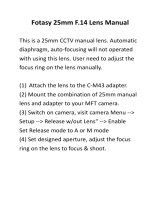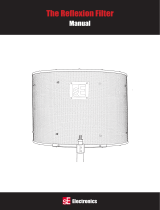Page is loading ...

e*H
a^mxmsm
English
Depth-of-field scale
-
Deutch
Scharfentiefeskala
Francais
Echelle
de
profondeur
de champ-
Espanol
Escala
de
profundidad
de camp—
-4M
-25 H
-Page
8
-
Page
25
-Seite
12
-Seite
25
-Page
16
-Page
25
Pagina
20
Pagina
25

IS.fiffiK',«';»«
8EEilK*'-f K
2SWBB
MtttttMtA
3«BI«*
107 J--f >y-rt«5KfflRU Hffl
4*^8® MSfl«FffliSt**-f K(SB Effl)
57 a--
7J->
> ?''J >;T I2,«U1S
6».«!gK§ffl l3Hfflttillt#-f K
l±t'»(C
Cc7)l^>X(i, -
=1
>F^"7 > hc7)^rTc7>^i>-5^-T-'-f lzffll.'-£-£*><T-£*TTL
rathittiaui-TMjsaiijtA'iTAtr.
*fcAi3j*(iii»F«a»<HiE,Mt)
<r>-h*
I*
>*«*(*, IOWII1S-C-. «»L'>**<7>i»Sf£iB«L->X*<n«»A-'bBltS,
»8<K"«T*
l*T»/<-f»**M»*'7-f FX-il/>XT-r. «*. COTJgit
ffi««A'ibfl|!>ffll*T-*<—#T-*'<-TS5^Xt
LT«Sat¥*m*'j:6'r.
—
*-« >?£ t"> hfth-B-It.SIJ-jm'J >^XiT-5 2rFK^itT-«a«»lig)lla0.6
m*T-»IST-* !T.T>7fji>f»< *«12"«>T-.--y 3—)H80«"F2.8,r-y 3
—
JL-300i""iF4.5U>X'c75 7-f JL-#
— *
£ SB T* *T„
L'>*«-S»»lt*|Sl(JE5B»-ib*T)~.Ji»-U £**<LTjt*
54T11.
It.
X*S»tr/5lR]~HI LIT.
~>±»
cmu>xs-Ai7jitm*^
7*f-"Y
i;»'J-7It*<•*«.
TJ.*
7*?Y
conattia
Kl^/<-A
I
iEH.-f3tjB(;*4; £ &«M5LTA-'b«5';oltT < t'Jl'. */c. St*
4

tvt-t-fc-tt B
L.-tKf>
Kr**3-**T. rotsieit'tevh^h-ttBT'Sif*'. Mufti:
fc
511
£'(**<*#< , »¥»J«{,S< 45Bt^dtf T ( I'') ST. MMIUM
T*i
< C
i*-T#
5OTT-, 77-f >5'-i«)»tl'Jt77»«i'rffllS6C*
jrawrr.
crou>xt77-f>y-x?g-i-i:ro«*#*5-ti-
"———___
*»<>-*
F3
F
2
A/L
0
a
B
S
0
c D
E
0
o
Gl Q2
S3
G4 HI
H2
0
o
H3
H4
J
a
0
K/P
0
0
M
R
0
• ?U^>-^<-#-TC-200*»l*L/;a*
F3
F2
A/L
•
•
B
0
o
c 0 E
o
©
SI G2
G3
G4 HI H2
H3 H4
J
•
•
K/P
•
•
M
R
•
•
T
•
fU3>'<-#—
TO-U,
TC-300ti«mtH*£-tiA.„
0: SifT.
O: «»»>—•«
,
#**i:
< <
K*l ST^ilfS *f,
|;**«1T.
• *i7>*<7>ttii»e-h-e-Tii. 7-r Jl'2»ritjf(ASA/IS0)&
5

X-Vs?
—C
*ia*»uit, *.s!E«ta«ii. 25"m*-ib5ommjiT-5 <rBfOTBa*<MEn?nx
-a*
A'<feU
%*•&*<&
<J
JTrnTcitK fc';H>„
»¥*;»*
»*#**«.
* *
5*?-<
mjsuiZsA*?
>zwLWoy
7 <>•?•—fax-mi
Lir„itz.m*AB^m-3Xiz#<r>^mi*ai,z
ttfTJ *T»
r«lc7)35m««»i;[B]m_ha*-&h-&.
J]mi
,5mm
tz^,
*-r»l<»4>*«tii;
0)lBf:t-5f:.SfflBIII.
m.BIH
(«3.5ft) *-^j?33m (HfilOft)
SWKSttiB
D
25mm,
35mm. 50mm(7)
3
Tm*.S!g||(i;
ti l-T
«#?<.
i
Bfl«R«
L X *> U » T. *^
fc«»!g(i«-*mt #m*A!g«ticcEUf:»?fafiiS TtJtsstt-TMKL
»-r. 4>
6

M
M IS m
m
* p a tt
Hi A
*.«S6KBSS
X - t ^ ?'
«
>J
at
K 'I * *
•;« * * St
v -5 ^ h
* * *
l : 4
lolflltt
80*40'
-47" 50
25,
28, 35. 40, 50
°°~0.6m,2ft.H#K)
B<sjt(ans« 73
-
3o')
4-22,
yr-Off-
SfdittU
-Zi >FV9> h
72mm(p = 0.75mm)
75mm(»*a)XII2™(*«>
104mm
«600g
i*i*»fB«'j
iate
<
a *
v
I- *¥BA- & U
>•
X*J*
t T-
T^-izV'l-
• •CHE9BB
72mmjtii:iA<^5tU>X+ +•
B.itfcLF-1
M— K* — XCL-I5S
tf
7— KHK-7(*'.it**)
V 7 h -T — ^ No.62
72mm
^ <JU?-
f U- 3 >/*
—
9
—
TC-200

NOMENCLATURE
1 Focal Length/Aperture Index 9 Meter Coupling Shoe
2 Distance Scale 10 Aperture-Direct-Readout Scale
3 Distance Scale Index Line 11 Aperture Indexing Post for Nikon
4 Infrared Compensation Scale SB-E Speedlight
5 Focusing Ring 12 Aperture Scale
6 Focal Length Scale 13 Meter Coupling Ridge
7 Zooming Ring 14 Aperture Ring
8 EE Servo Coupling Post
FOREWORD
This 25-50mm f/4 lens is a retro-focus zoom lens featuring 11 elements in
10 groups. It offers the benefits of a wide-angle 25mm lens with continuous
zooming up to 50mm. It is well constructed and designed to correct all aber-
rations, especially barrel distortion which is a common problem in wide-angle
zoom lenses. Although a zoom lens, its optical performance will challenge that
of fixed focal length lenses for sharpness and image clarity throughout its
entire focal range. Both zooming and focusing are accomplished through two
independent rings—minimum focusing distance is 0.6m, Multilayer Nikon
Integrated Coating on all air-exposed lens surfaces helps reduce reflection,
thus minimizing flare and ghost to insure greater image contrast and color
rendition.
Among the applications best suited for this lens are press photog-
raphy and general subject shots.
MOUNTING A
Position the lens in the camera's bayonet mount, aligning the aperture index of
the lens with the mounting index of the camera. Twist the lens counterclockwise
until it clicks into place. To remove, depress the lens release button on the
camera body and twist the tens clockwise.
When mounting the lens on the camera with a meter coupling lever (Al type),
make sure that the camera's meter coupling lever is correctly positioned; when
mounting on a camera without this lever (non-AI type), "manual" maximum
aperture indexing is required. In both cases, refer to the camera's instruction
manual.
FOCUSING B
To focus, rotate the focusing ring until the image in the viewfinder appears
sharp and crisp. Once your subject is in focus, you are then ready to zoom. The
subject will remain in focus throughout the entire zoom range. For pinpoint
focusing,
use the maximum focal length and then reduce the focal length for the
desired picture composition.
You can prefocus the lens by using the distance scale markings which are
engraved,
both in meters and feet, on the focusing
ring.
Turn the focusing ring

until the black dot is opposite the number which corresponds with your
esti-
mated or measured camera-to-subject distance.
Recommended Focusing Screens
Various interchangeable focusing screens are available for F2 and F3 Nikon
cameras to suit any type of (ens or picture-taking situation. Those which are rec-
ommended for use with this Zoom-Nikkor 25-50mm f/4 lens are listed below.
<Wi Jier^n
F3
F 2
A L
0
0
B
0
C D E
s
Gl G2 G3 G4 HI
H2
O
H3|H4
J
a
o
K P
0
0
M
R
a
o
T
,5,
• When the Teleconverter TC-200 is attached to this iens, use the following
table:
C«mora —• ____
F3
F2
A/L
•
•
B
0
a
c
D E
a
0
Gl G2
G3
G4
HI
H2
H3 m J
•
•
K/P
•
•
M
R
•
'
T
•
Teleconverters TC-14 and TC-300 can't be used with this lens.
© = Excellent focusing
<§) = Acceptable focusing
The split-image rangefinder, microprism or cross-hair area is dim. Focus
on the surrounding matte area.
O = Acceptable focusing
Slight vignetting (or moire phenomenon in the case of the microprism)
affects the screen image. The image on the
film,
however, shows no trace
of this.
Blank means not usable.
With Photomic-series finders, -Vj in the table above means that the film speed
(ASA/ISO) should be set against the proper compensating mark as shown
in the diagram. When no exposure correction is indicated, the film speed
(ASA/ISO) in use should be opposite the • index.

ZOOMING C
To zoom in or out, simply turn the zoom ring until the desired composition is
tramed on the focusing screen. The ring has a four-position scale showing which
of five focat lengths—25mm, 28mm, 35mm, 40mm and 50mm—is in use in case
you want to preset the lens to any of these focal lengths.
Caution:
Slight vignetting will occur when you shoot with the lens at a small
aperture, at its closest focusing distance and at a wide angle focal length.
DEPTH-OF-FIELD SCALE
Unlike other Nikkor lenses, the Zoom-Nikkor 25-50mm f/4 has no color-coded
depth-of-field indicators engraved on the lens barrel. However, you can still
determine the depth of field by using the scales provided with this pamphlet.
To use, first cut out the scales along the lines indicated. Then, place the sub-
ject-distance scale (B) over the depth-of-field scale (A) with the top edge of ihe
(B) scale lined up with the focal length in use and the focused distance aligned
with the (A) scale's central indicator line. Now read off the numbers (on the B
scale) which appear opposite the pair of depth-of-field lines (on the A scale)
corresponding to the aperture in use; these numbers express the depth of
field lor the settings in use.
For example, if the lens is prefocused at 1.5m (5 ft) with the focal length set at
35mm and the aperture at f/16, the numbers on the distance scale opposite
the depth-of-field lines for the f/16 setting show that the depth of field extends
from 1m
(3.511)
to 3m (10 It). You can also observe the depth
o1
lield through the
viewfinder by pressing the depth-of-field preview button on the camera.
INFRARED PHOTOGRAPHY D
The plane of sharpest focus for infrared light is slightly more distant than
its counterpart for visible light as seen through the camera viewfinder. Thus,
for the sharpest focus in infrared photography, adjustments must be made.
The scales provided can be used for determining the amount of adjustment via
the dotted infrared compensation line included.
In the same manner as described in the "depth-of-field scale" section, match
the prefocused subject distance (using the B scale) with the focal length and
aperture scale central indicator line (on the A scale). The distance from the
central indicator line to the dotted compensation line represents the amount of
adjustment required. Now, turn the lens' focusing ring counterclockwise
until the prefocused distance is shifted as prescribed on the scales.
10

SPECIFICATIONS
Focal length: 25^50mm
Maximum aperture: f/4
Lens construction:
11
elements in
10
groups
Picture angle: 80°40' ^47°50'
Distance scale: Graduated in meters and feet from 0.6m (2 ft) to infinity («)
Zooming control: By independent zooming control ring with rotation of 83°;
reference marks provided for focal length settings of 25mm, 28mm, 35mm,
40mm and 50mm
Focusing
control:
Independent focusing ring with total rotation of 73*30'
Aperture scale: t/4<M/22 on both standard and apeiture-direct-readout (ADR)
scales
Diaphragm: Fully automatic
Exposure measurement: Full-aperture method adopted; meter coupling ridge
provided for coupling with Al-type cameras, and meter coupling shoe for
non-AI cameras
Attachment
size:
72mm
(P
= 0.75mm)
Mount: Nikon bayonet type
Dimensions: 75mm dia. x 112mm (overall); 104mm extension from flange
Weight:
Approx.600g
Accessories
72mm screw-in lens cap
Rear lens cap LF-1
Slip-on lens hood HK-7
Flexible lens pouch No. 62
Hard lens case CL-15S
72mm filters
TeleconverterTC-200

(Nikon)
NIPPON KOGAKU K.K.
No reproduction in any form of this booklet, in
whole or in part (except for brief quotation in
critical articles or reviews), may be made without
written authorization from the publishers. Printed in Japan (82.3AOi&-2 N
/

